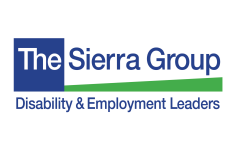Accessibility
This is the official accessibility statement for thesierragroupfoundation.org
If you have any questions or comments, please e-mail us at info@thesierragroupfoundation.org.
File and Document Types
Throughout the site, we have linked to various documents for information
and resources. Some of the documents are in Microsoft Word format ![]() , MS PowerPoint
, MS PowerPoint ![]() and
Adobe PDF
and
Adobe PDF ![]() .
For the most part, these documents will open in a new browser window.
.
For the most part, these documents will open in a new browser window.
![]() For
the items in Adobe PDF format.
You will need Adobe Reader installed on your computer to read the files.
If you do not have Adobe Reader, you can download
a free copy of Adobe Reader from the Adobe web site.
For
the items in Adobe PDF format.
You will need Adobe Reader installed on your computer to read the files.
If you do not have Adobe Reader, you can download
a free copy of Adobe Reader from the Adobe web site.
To view the PDF file as HTML or text, go to Adobe's PDF-to-HTML conversion tool.
You can download the documents to your hard drive by right clicking on the file name and choosing "save target as" from the menu.
For Microsoft Word documents you will need Microsoft Word, or you can download the free Word Viewer or you can obtain a free compatible version at OpenOffice.org.
This website includes open-captioned videos that are in Windows Media Player format. To enable captions In Windows Media Player, do the following:
- For captions to display in the stand-alone Windows Media Player, they must usually be turned on manually the first time. This can be done by selecting View > Captions or View > Now Playing Tools > Captions in older versions of Windows Media Player.
- In Windows Media Player 9 or newer, select Play > Captions and you may have to enable Tools > Options > Security > Show local captions when present to view local caption files.
You can obtain more information or download the latest Version of Windows Media Player on Microsoft's Window Media Player site.
Feel free to contact us if you would like any of the documents in an alternative format.
Some files are compressed in a zip file format. To open the zip file, you will need a utility program such as IZARC or WinZip.
Standards compliance
- Most pages validate as XHTML 1.0 Transitional and our Cascading Style Sheets validate as CSS2.
- The pages comply with all guidelines of the W3 Web Content Accessibility Guidelines.
- The Sierra Group makes an attempt to label tables with captions and summaries to allow screen readers to render the table intelligently.
- Please note that The Sierra Group is not responsible for the compliance of external links and third-party sites.
Navigation aids
- The main content is after the navigation links in the source code. Therefore we created a "skip to navigation links" link (access key 0) to skip to the main content. This link is visible to screenreaders and to sighted users that tab through the web site.
- All pages have home and copyright links to aid navigation in text-only browsers and screen readers.
- The Sierra Group makes an attempt to label tables with captions and summaries to allow screen readers to render the table intelligently.
Links
- Whenever possible, links are written in a manner that will make sense when read out of context. Many browsers (such as JAWS, Home Page Reader, Lynx, and Opera) can extract the list of links on a page and allow the user to browse the list separately from the page.
- There are no "javascript:" pseudo-links. All links can be followed in any browser, even if scripting is turned off.
- All links to MS Word and Adobe Acrobat PDF documents opening a new window.
- Many links have title attributes which describe the link in greater detail, unless the text of the link already fully describes the target (such as the headline of an article).
Images and Video
All content images used include descriptive ALT attributes. Purely decorative graphics include null ALT attributes.
Some videos are open captioned using Windows Media Player and Synchronized Accessible Media Interchange (SAMI) format. An asx file is used to combine the caption with the media file.
Some videos are hosted on YouTube and have captions. Other YouTube videos that are not captioned have text transcripts.
Visual design
- This site uses cascading style sheets for visual layout. Even if your browser or browsing device does not support style sheets, the content of each page should still be readable.
Accessibility references
- W3 accessibility guidelines, explain the reasons behind each guideline.
- W3 accessibility techniques, explain how to implement each guideline.
- W3 accessibility checklist, a busy developer's guide to accessibility.
- U.S. Federal Government Section 508 accessibility guidelines.
Accessibility software and services
- HTML Validator, a free service for checking that web pages conform to published HTML standards.
- Web Page Backward Compatibility Viewer, a tool for viewing your web pages without a variety of modern browser features.
- JAWS, a screen reader for Windows. A time-limited demo is available.
- Lynx, a free text-only web browser.
